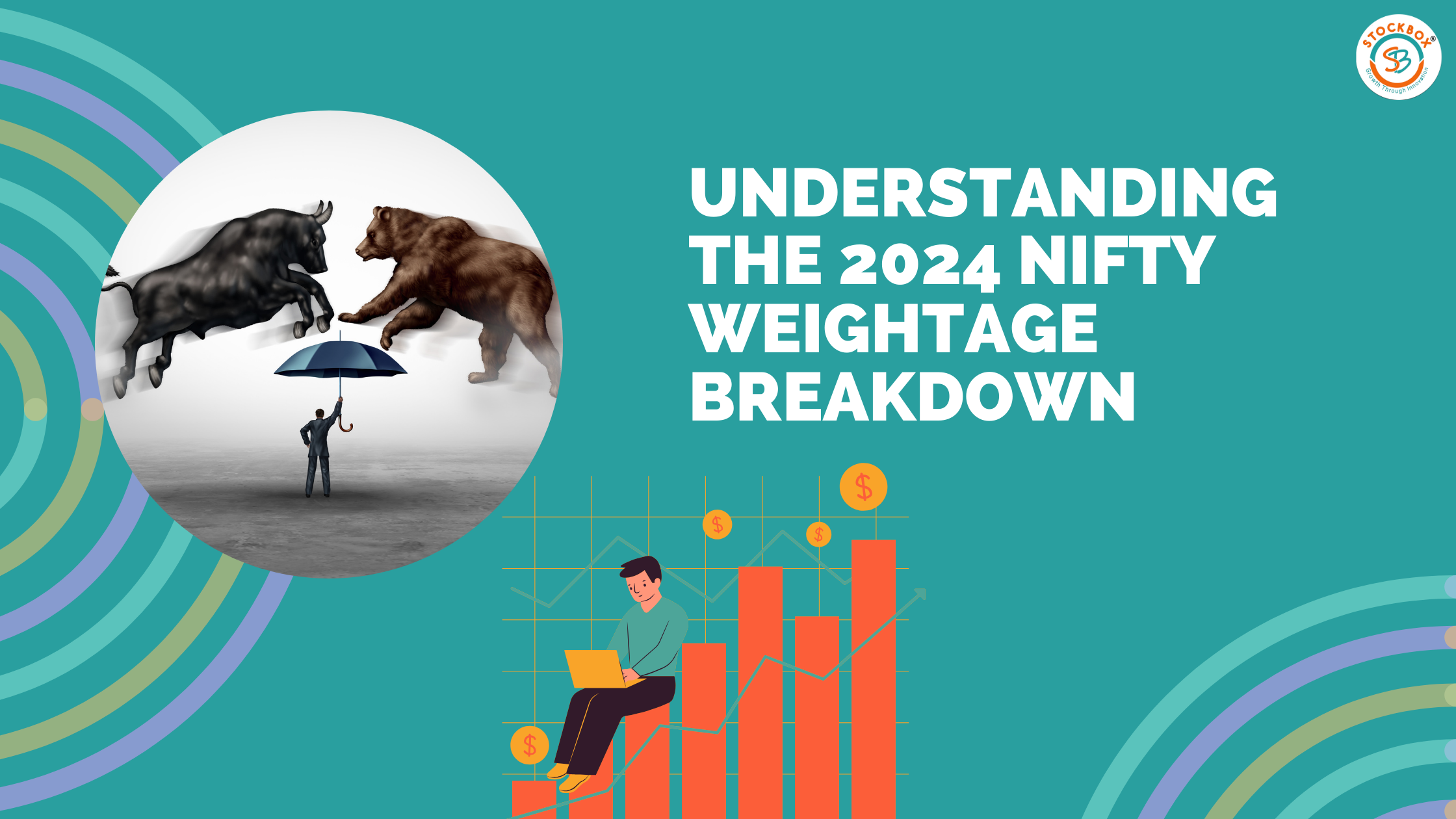The Nifty weightage is likely to be one of the most influential factors in the performance as well as the trend of the Nifty 50 index.
Nifty 50 is one of the benchmark indices of the National Stock Exchange of India (NSE) and is normally adopted by investors to measure movement in the stock market in India. The index constitutes large & established companies across 12 sectors with the top 50 stocks in each sector weighted in the Nifty index proportionate to their share market capitalization.
This time around, we shall look into Nifty weightage and its importance, prepare a list of nifty 50 companies, discuss the factors affecting it and analyze its bearing on the investors.
How does the Nifty 50 Weightage work?
Weightage in Nifty 50 means how much significance is given to the individual stocks to the Nifty 50 index. He NIFTY 50 index is stock market index in India, which comprises of top 50 National Stock Exchange (NSE) listed companies in term of market capitalization.
The weightage of the company in Nifty 50 index can be assessed by the market capitalisation of the index, which is the product of the current price of the index and the total outstanding shares of the company.
The Nifty weightage of individual stocks in Nifty 50 index also holds significance as it affects the overall standing of the index. As indices are supposed to reflect the weightage of the member companies, a company with greater weightage in the index would cause more movement tough less weightage companies. Weightage of index composition is therefore sensitive information to investors and traders.
How is Nifty Determined?
The Nifty index computation applies a free-float market capitalization approach. This implies that the total market capitalization of the index can be estimated by multiplying the current share price by the free-float shares of each stock included in the index market. Free-float market capitalization means the total market capital of shares issued by a company that are available to the public in the market, minus those that are locked-up or held by promoters.
In the case of Nifty, the index is constructed after calculating the free-float market capitalization of each constituent and assigning the respective shares in index value of each stock. A market capitalization very often also bears the concept of the market weightage, where big companies have greater market cap indices than smaller companies thereby having less or no effect on the movements in the index value.
Likewise, the Bank Nifty weightage, which is a sector specific index of stocks in banking sector also constructs in a similar fashion. The Bank Nifty components allocation can be worked out in relation to the free-float market price of each bank stock included in the index. It is also subject to re-evaluation over a certain time frame and that is on account of many things like the movement of stock prices, action on corporates, or even changes in the existing shares.
Top 10 Nifty 50 Stocks Weightage
| Company Name | Industry | Weightage | |
| HDFC Bank Ltd | Financial Services | 13.77% | |
| Reliance Industries Ltd | Oil & Gas | 9.56% | |
| ICICI Bank Ltd | Financial Services | 7.87% | |
| Infosys Ltd | Information Technology | 6.01% | |
| ITC Ltd | FMCG | 4.55% | |
| Tata Consultancy Services Ltd (TCS) | Information Technology | 4.04% | |
| Larsen & Toubro Ltd (L&T) | Construction | 3.84% | |
| Axis Bank Ltd | Financial Services | 3.13% | |
| Kotak Mahindra Bank Ltd | Financial Services | 3.04% | |
| Hindustan Unilever Ltd | FMCG | 2.93% | |
What is the Process through which a Nifty 50 Company Comes in to be?
The factors involved in the selection of Nifty 50 comprise of the following:
Trading Ability – The stock can be said to have high trading volume hence high liquidity and ease in mailing transformation. This is because it usually helps to uphold the very essence of the index that’s its primary objective to represent the prevailing economic conditions of the country and capture the variation in market behavior.
Market Capitalization – The stock ought to possess large market capital appropriately. It enables knowing that the index includes only the shares totalling to the largest and the most powerful players in the market.
Sector Weightage – Nifty 50 constituents’ Sector Allocation should be in accordance with the various sectors of the economy. This allows for an understanding of the overall performance of the Indian equity market.
Financial Stability – Investments are always attracted towards a stock which should have a rich and proven financial history. It ensures that the index may remain representative of the market and changes of market sentiment is reflected.
Age of Listing – This condition implies that the restrictions on the age of stocks listed on the index comes into minimum consideration for aimed purpose of enhancing the quality of established firms and not new companies being incorporated in the population under consideration.
Guidelines for Investing in Nifty 50 As a whole, investing in Nifty 50 index is possible in various ways:
look for Nifty 50 ETFs: These are offered on the stock exchange and operate the same way as any other regular stock, such that they can be bought and sold with ease. They are designed to follow the performance of NIFTY 50 index and provide access of the entire index in a single security.
Consider an Index Mutual Fund: NIFTY 50 Indices include these funds and invest in the same forty-nine coins in the same way as these fifty do. The purpose of such funds is to follow the performance of the index.
Futures and Options (Nifty derivatives): These are financial instruments that are based upon the Nifty 50 index. These contracts are based on the value of the index. However, owing to the more sophisticated, and risky nature of this theoreti9cal investments in derivatives investing especially in ETFs/index funds is much easier than in any other strategies.
Conclusion
Nifty 50 is considered the most prominent index for equity market in India. The stock weightage in nifty 50 plays a significant role in the investment decisions of both the traders and investors. Based on the understanding of the dynamics, the investors can understand the trend in the market, when to invest in which portfolios and where to make investments.

